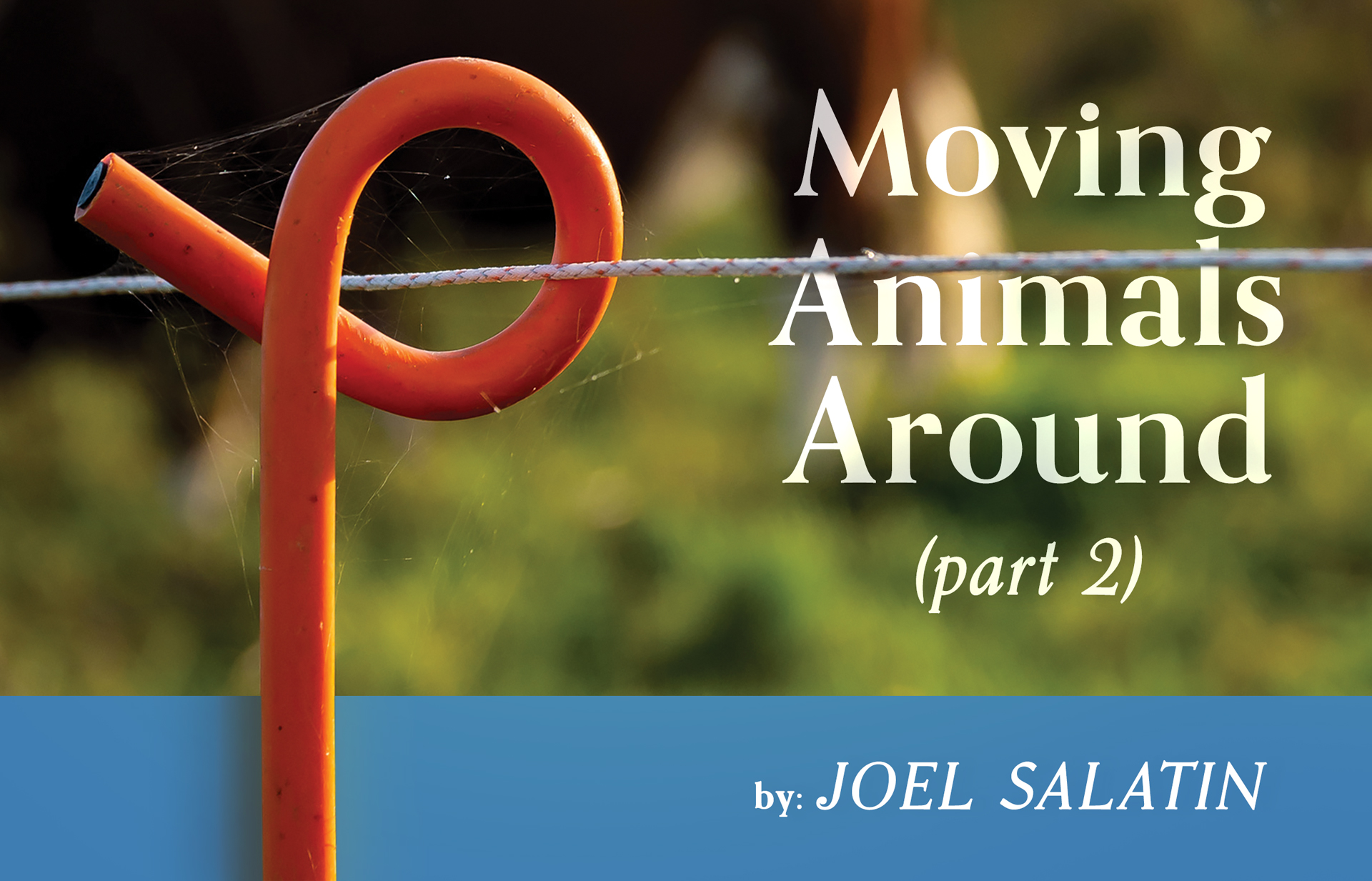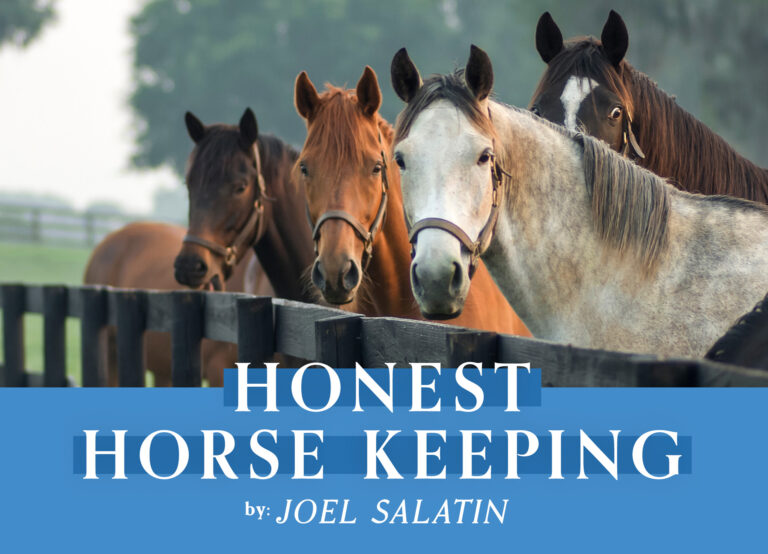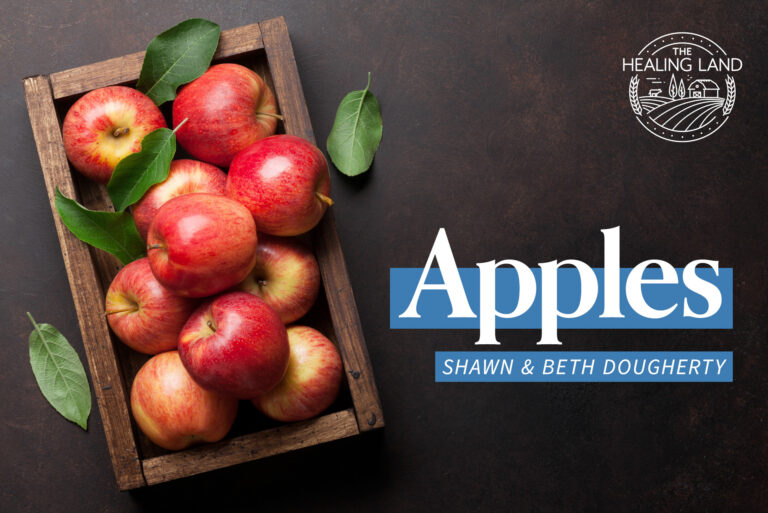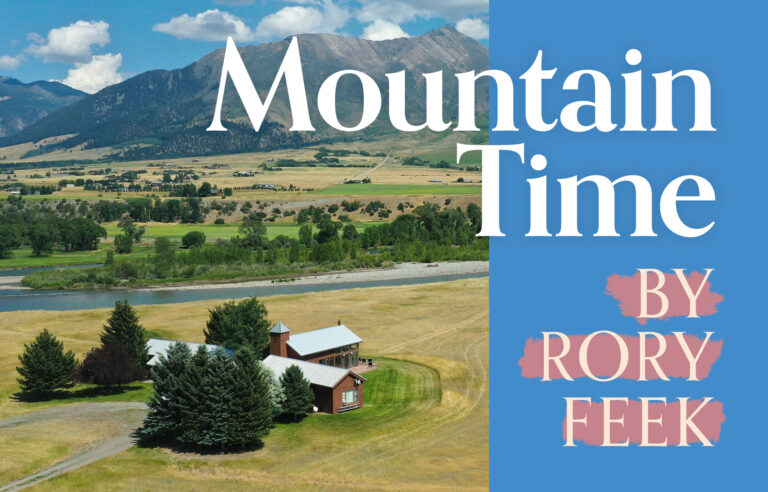By Joel Salatin, Plain Values
Last month I laid the foundation for the patterns and whys of animal movement. Failure to systematically and routinely move domestic livestock is perhaps the single biggest failure in animal agriculture.
But how? Fortunately, we have infrastructure today that makes learning ancient herding techniques unnecessary. In extremely remote and unpopulated areas, herding is still practiced. But in more populated and developed areas, it’s not practical. I don’t know anyone capable of telling a milk cow to stay in a 10 by 20-yard spot in a pasture and have her obey.
But you can do it with an electric fence. The basic infrastructure necessary to duplicate this foundational pattern in God’s design is electric fence, water pipe, and portable shelter. If you’re going to move animals intentionally and routinely, we need mobile systems to meet their basic needs.
Before any of that, however, you need to develop access. You won’t be driving willy-nilly across your farmscape. You need all-weather access. These farm lanes become your transport arteries for both equipment and animals. They will be at least 16-feet wide, fenced on both sides, with a water line running along one side. The investment to develop good access lanes will pay back more than about anything you do with your property. If you can’t get someplace, it doesn’t exist. Once you get the access installed, you can proceed with the three other pieces.
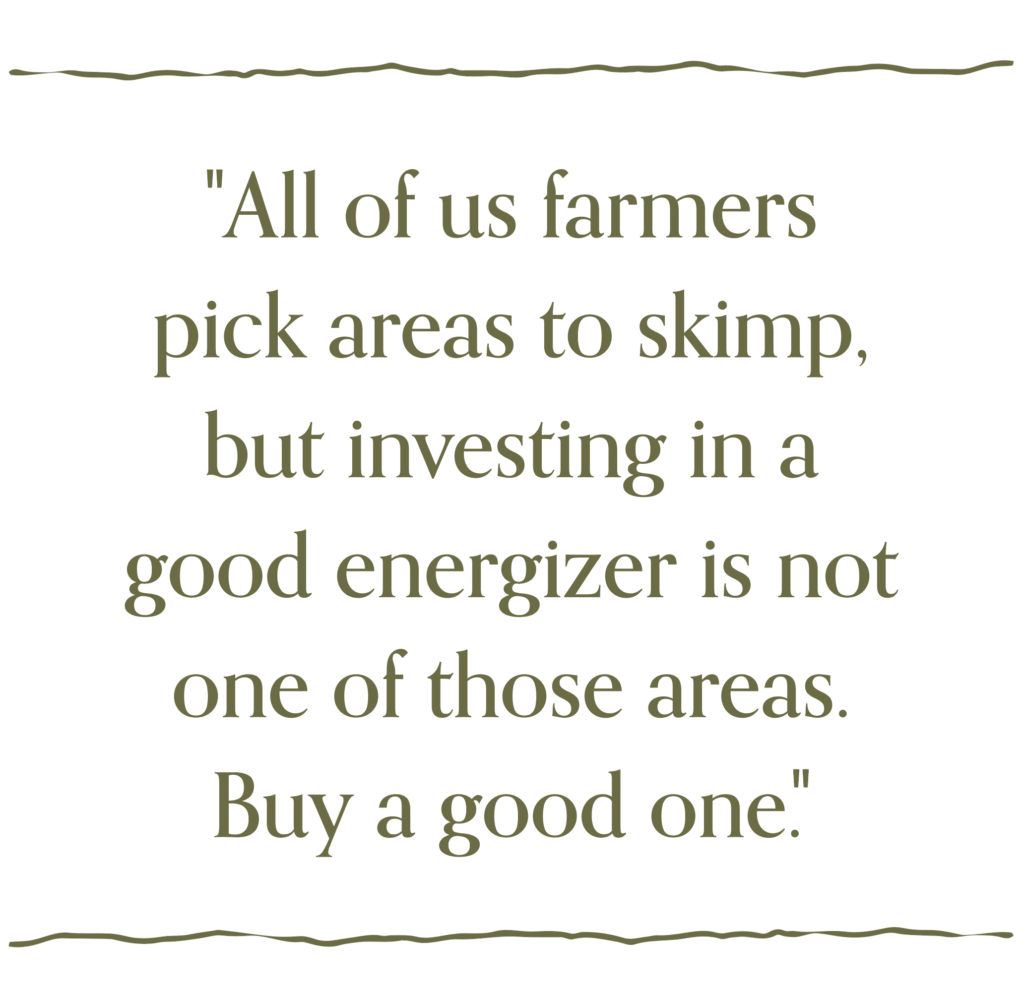
The first component is control, or fencing. Dependable electric fencing comes in all shapes and sizes. All of us farmers pick areas to skimp, but investing in a good energizer is not one of those areas. Buy a good one. If it says “will energize X number of miles of fence,” don’t buy it. Any reputable energizer manufacturer knows that what counts is joules of energy output; that has nothing to do with miles of fence.
An electric fence system has two components: permanent and mobile. The permanent fence defines field borders and stays in place for years. The mobile fence crosses the field, from side to side, forming paddock subdivisions. In general, novices should install only portable fence initially; whatever doesn’t get moved in three years should be converted to permanent.
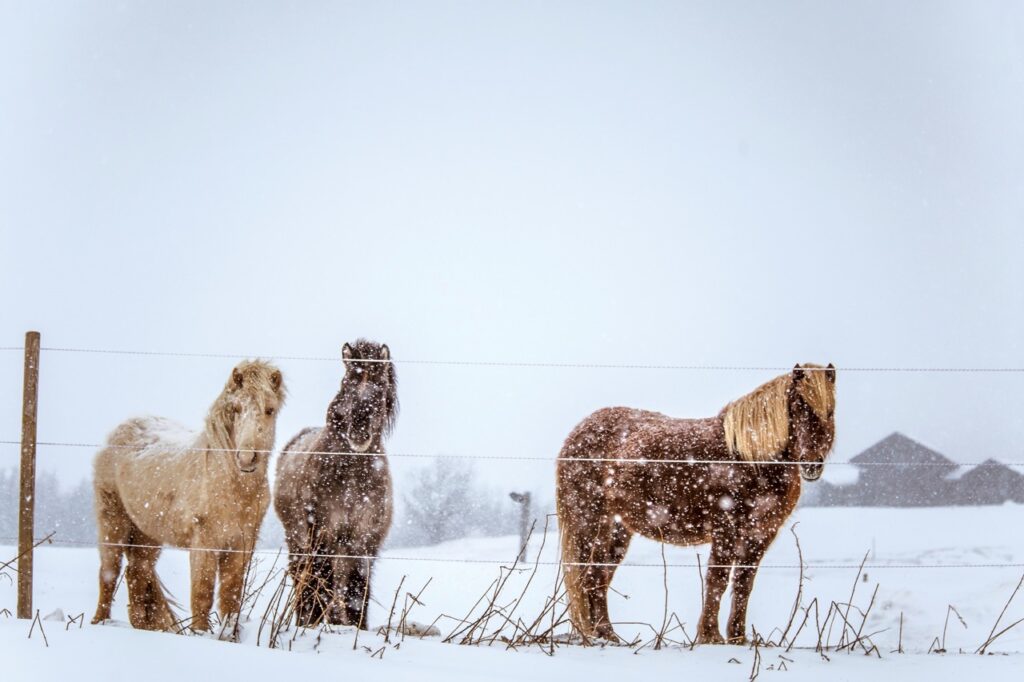
When approaching any piece of land, the permanent fence creates management clarity. Because it defines fields, it separates forest land from open, or open land from riparian. Generally, these fences will never be straight; they meander based on topography. They should never be more than 200 yards apart because it’s hard to carry more than 200 yards worth of mobile fence and stakes in your hand.
Try to create homogeneity of terrain and aspect within fields. Don’t combine southern and northern aspects, for example, because they grow at completely different rates. Don’t put low wet-prone ground in the same field as a dry hill for the same reason. The dry hill is where you want cows in a wet time; the damp valley is where you want them in a dry time. The whole idea is to give you unlimited options to place the animals where they need to be.
I like aluminum wire for permanent fencing because it conducts much better than steel, is much lighter, doesn’t require brace posts, and never dulls down. Avoiding dullness is critical for wildlife friendliness. Steel wire, no matter how thick the galvanized protection, will eventually get dull, and wildlife inadvertently hits it because it doesn’t shine in the moonlight. Aluminum stays bright indefinitely, protecting both you and the wildlife from accidents.
Strands of wire required for control vary: cows, one; pigs, one or two; sheep, three; horses, one. The keys to functional electric fencing are tension, voltage, visibility, and height. I don’t have enough space in this introductory column to explain every nuance of this, but be assured that properly built and maintained electric fence is extremely dependable for animal control. If it’s not working, you’re not doing something right. Don’t blame the animals if they won’t stay in.
Mobile fencing today is usually some sort of braided polywire, which is a combination of plastic and wire. The plastic creates strength and visibility while the intertwined steel filaments conduct spark. It goes on a reel that’s conducive to rolling up; we use cheap extension cord reels from the hardware store. Yes, you can buy $70 sophisticated high-tech reels, but when you drop them and they crack, you’re out a lot more than the $10 for a simple extension cord reel.
Solar-powered portable energizers have come way down in price and way up in performance over the last decade. You don’t need a big powerful central energizer; we only use mobile energizers. That way the many visitors we have walking around the farm are less likely to get shocked—it’s far more child-friendly than a central grid that has all fences powered at all times. We only put spark where the animals are.
The second component is water. In short, you cannot afford to haul water. It’s heavy. Filling containers on trailers and trucks is grossly inefficient. Pipe is cheap. Even 1 1/4 inch black plastic pipe will not run you more than 80 cents a foot. That means for less than $4,000, you can install a whole mile. On our farm, we have about 10 miles of buried pipe that delivers water from permaculture-style high terrain ponds by gravity. No electricity, pumps, solenoids, or switches. As long as we have gravity, it works; when gravity quits working, I’m out of here.
A water line runs alongside the access lane and strategic field edges. For poor-boy access, we cut segments of 18-inch plastic culvert to hold soil away from the buried valve. A slab of wood covers the culvert like a manhole cover. Frost-free hydrants are not only expensive, but they are also conducive to cows rubbing over them and breaking them off. Then you have a swamp and a broken pipe.
Water sources include wells, springs, cisterns (from roof water), and ponds. Every acre-inch of water is 30,000 gallons, and the worldwide rule of thumb is that one-third of all rainfall comes too fast or too much and runs off the surface. That means in a 30-inch rainfall area (everything east of the Mississippi), 10 inches a year turns into surface runoff. By definition, surface runoff means the soil can’t take anymore, and it accumulates into a flooding problem downhill.
In other words, even one acre in many places generates 300,000 gallons of surface runoff per year. Trapping that in a pond, especially a pond high on the landscape, protects neighbors from flooding and blesses the landscape with water during dry times. It’s perhaps the ultimate stewardship investment to turn a water curse (flooding) into a blessing.
The third component is shelters. Again, technology gives us new and exciting options. Not too long ago, logs were cheaper than milled lumber because milling was inefficient. Both labor and the size of the kerf (amount of wood removed by the cutting blade) made small-dimension milling uneconomical. But with today’s bandsaw mills, we can build shade structures out of tinker toys.
Small dimension lumber is one of the biggest breakthroughs in animal movement. On our farm, we have eggmobiles for laying hens that follow the cows and do their sanitation work. Shademobiles on an extended hay wagon chassis protect cows, like portable shade trees. They enable us to precisely place the day’s manure and trampling on rocks, weeds, or brambles. Broiler chicken shelters can offer predator and weather protection for chicks and yet be light enough to move by hand each morning.
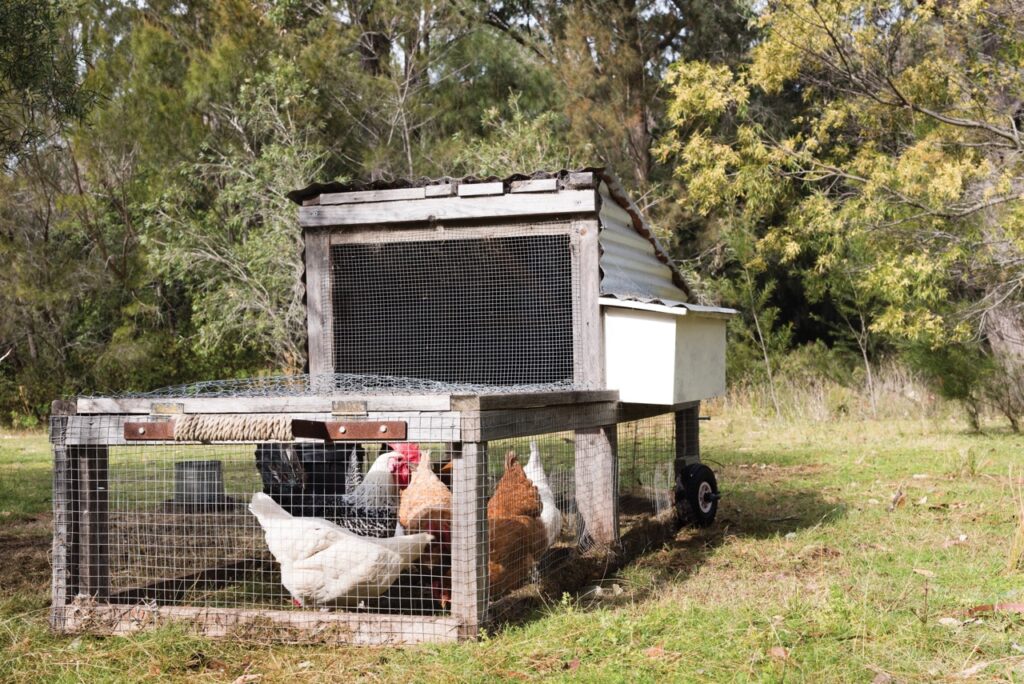
A “Rambler” for the ram allows that boy to virtually self-move himself along the pasture. A Gobbledygo for turkeys, built on a mobile home axle and offering roosts on a V-truss, offers protection and habitat for large pastured flocks of turkeys. For poultry, electric netting gives control and predator protection. These fences are stand-alone, meaning they don’t need any supporting permanent fencing.
My grandsons have sheep and ducks in netting (two different nettings). Our Millennium Feathernet is a portable A-frame on skids that protects 1,000 layers in a quarter-acre electric netted perimeter; the entire shebang moves every three or four days. These simple systems offer wonderful management opportunities at any scale. Unlike industrial farming, in these systems, the equity is in management skill, not infrastructure.
Because all of these components are relatively cheap as a ratio of production potential (value), they offer a way into farming for a young person. We achieve scale by duplicating these modules rather than by building massive centralized stationary infrastructure. The biggest hurdle to young people entering agriculture is the capitalization costs associated with large machinery and buildings.
But with completely mobile systems, not only is the infrastructure cheap, it can be started with one module and expanded with cash flow by duplication. In fact, these mobile systems enable a farm to germinate on unowned land; that’s a game-changer. A mobile system is easy to add to an existing farm operation, making next-generation complementary enterprises doable.

If you don’t want to pay vet bills, fertilizer bills, or energy bills, tap into the functionality of animal movement. It makes happy and healthy animals, which in turn make beautiful landscapes, which make the farmer appreciate living in a world that is fearfully and wonderfully made.
This article was published in the February 2022 issue of Plain Values Magazine. If you want the latest stories every month, subscribe to the magazine at plainvalues.com. As a special thanks, get 10% off your subscription with the code “GAB23”!
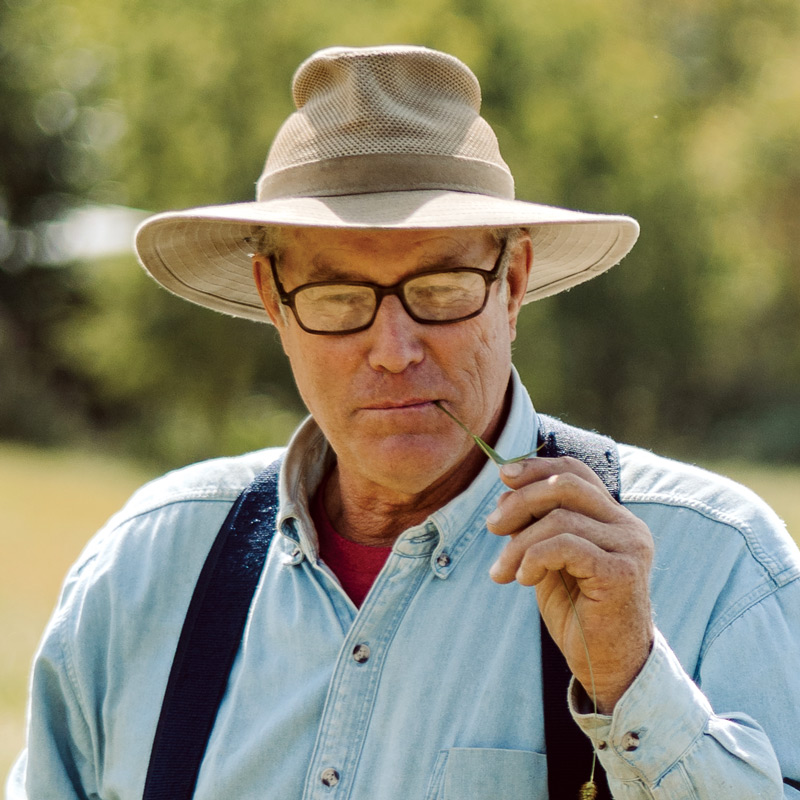
Joel co-owns, with his family, Polyface Farm in Swoope, Virginia. When he’s not on the road speaking, he’s at home on the farm, keeping the callouses on his hands and dirt under his fingernails, mentoring young people, inspiring visitors, and promoting local, regenerative food and farming systems.


